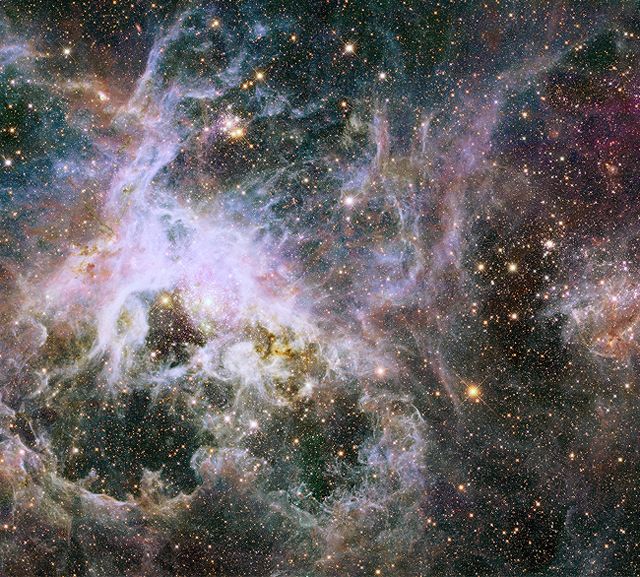
The Hubble Space Telescope has had a peek behind the clouds of frenzied star-birthing supercluster the Tarantula Nebula, the nearest observable laboratory of the kind of star-making that was common in the early Universe.Amazing.
NASA's space telescope used near-infrared views to get a glimpse of the more than 800,000 stars and protostars embedded in the nebula, which are behind clouds of dust that can only be pierced by near-infrared light.
The Tarantula Nebula is 170,000 light years away in the Large Magellanic Cloud, a small satellite galaxy to our own Milky Way. Astroboffins are particularly keen on studying the nebula because of the amount of star birth going on in there, with stars, red protostars, ageing red giants and supergiants all giving insights into stellar evolution.
The huge Hubble mosaic is made up of 438 separate pictures and spans 600 light-years.




Shakesville is run as a safe space. First-time commenters: Please read Shakesville's Commenting Policy and Feminism 101 Section before commenting. We also do lots of in-thread moderation, so we ask that everyone read the entirety of any thread before commenting, to ensure compliance with any in-thread moderation. Thank you.
blog comments powered by Disqus